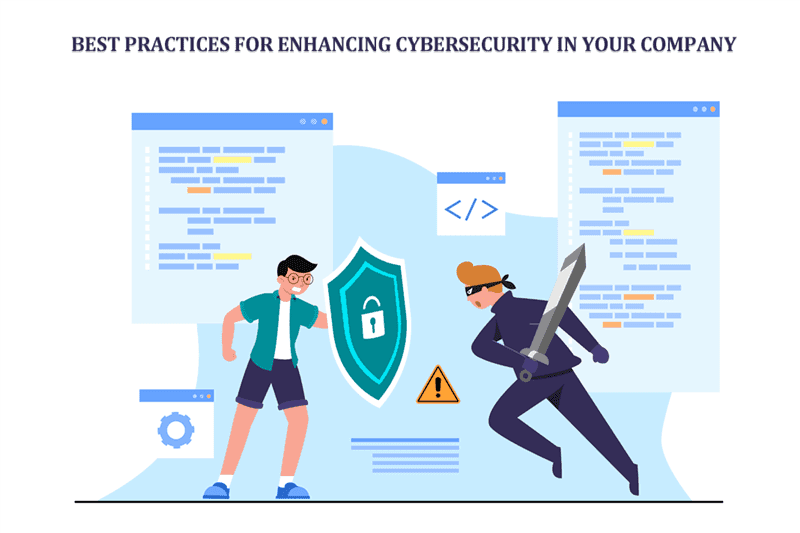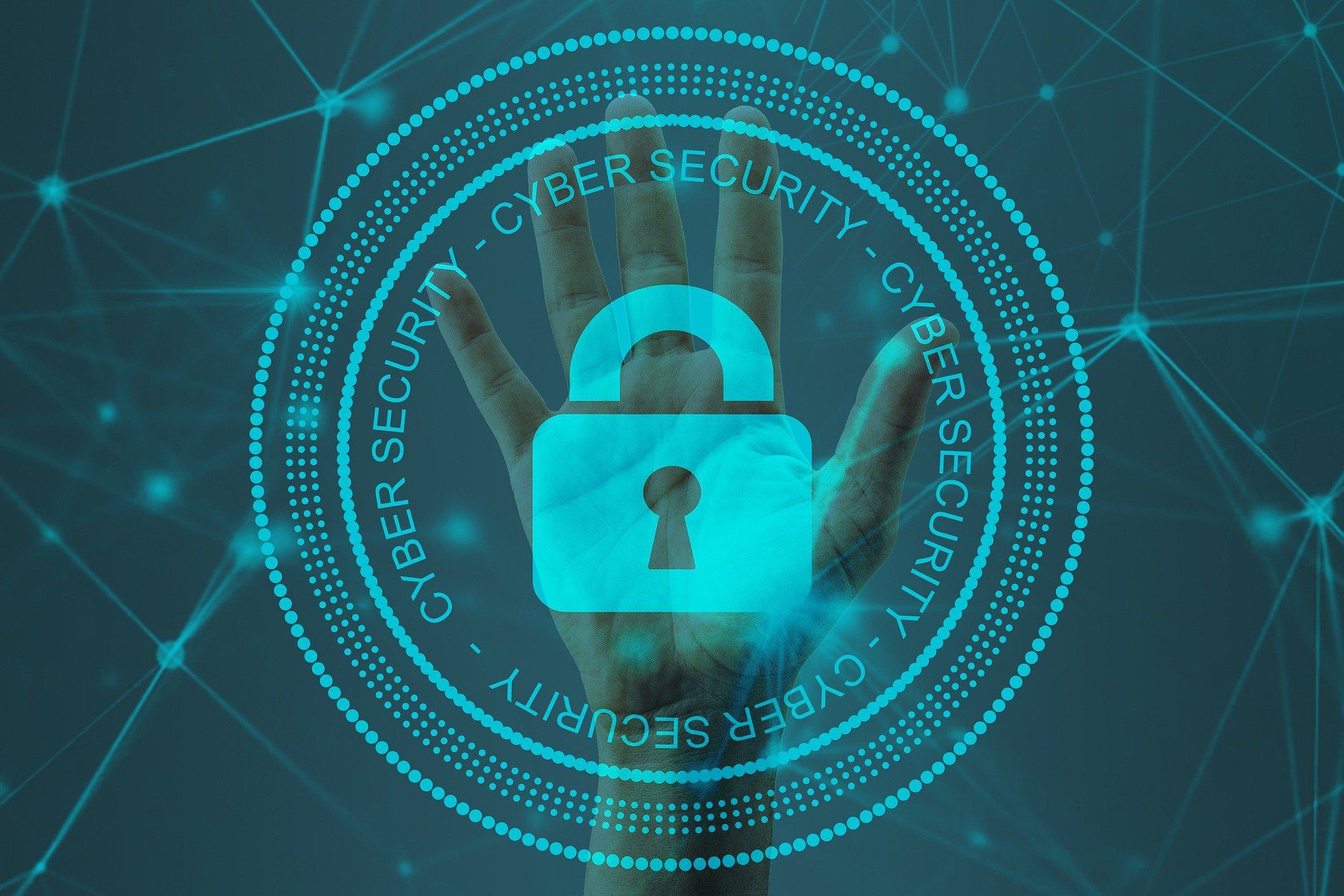
How safe is your business from any cyberattacks? Data breaches, identity thefts, and ransomware attacks are threats that put every business at enormous risk. You’ve probably heard several horror stories of identity theft and cybercrime.
These stories provide a good reminder that criminals, both big and small, are always on the lookout for an easy payday. So, the question is: What can you do to protect your business? The answer is boosting your defense systems. Safeguarding sensitive information is much more than just setting up a virus barrier.
It involves creating a corporate culture with strong security ethics, having every employee use the most current technology and tools, and anticipating new emerging threats.
This article provides all businesses, regardless of their size, with thorough techniques for advancing cybersecurity and protecting vital assets in an increasingly interconnected world.
12 Best Practices for Enhancing Cybersecurity
1. Build a Strong Cybersecurity Policy
Your cybersecurity incident policy is the single most important edict of policy. It sets out the goals for each company, states what each employee will do, and anticipates trouble spots.
Make sure the policy addresses password policies, use of the internet, handling of sensitive data, and teleworking protocols. It is important that all employees be trained in the policy, and it should be reviewed regularly.
You don’t have to be bound by policy documents. Securing your network starts from understanding how to curb threats from within the organization.
2. Educate and Train Employees Regularly
As the idiom says, ‘your employees are hurting you’; it is apt in this case. All it takes is a small effort, like opening one link, to put your data at risk. Ensuring your staff know how to react and what is relevant is very problematic.
Explain to them phishing, social engineering, insincere browsing, etc. Don’t forget to mention case studies. A positive impact on your organization can be achieved if people understand the topics that are being explained.
3. Use Strong Passwords and Multi-Factor Authentication (MFA)
Weak passwords are a breeze to crack. Encourage your employees to use unique and complicated passwords across all accounts. Use a combination of phrases, letters, numbers, and symbols.
On top of encouraging strong passwords, multi-factor authentication (MFA) should also be implemented. Adding MFA will improve security since a second form of verification will be required, such as a fingerprint scan or a code sent to the registered phone. With multi-factor authentication alongside robust passwords, your cybersecurity posture greatly improves.
4. Keep Software and Systems Updated
Software that is not up-to-date is one of the most common access points for hackers. Frequently, developers release patches/fixes for security flaws. If lacking the firmware updates, the systems continue to be vulnerable.
Set up automatic updates for all devices and software. For components like routers, regular manual checks for firmware updates increase security. Taking these steps not only prevents avoidable attacks but also reduces vulnerability.
5. Secure Your Network Infrastructure
Your network is the main route of data. Attackers can intercept or steal data if the network is not secure. Implement a good firewall and use VPNs for remote connections—control accessibility to different network sections.
Network segmentation can also help control damage if an attack occurs. Check your network consistently for any unusual operations. A company’s cybersecurity strategy needs a strong and secure network.
6. Back Up Data Regularly
Data loss can be a stumbling block to any business, especially after investing resources. Losing sensitive data due to cyberattacks or physical disasters may lead to dire consequences. Having a backup puts you in a much better position to recover from attacks immediately.
Back up your data regularly and keep copies in multiple locations, both onsite and offsite. Sensitive data backup files should be stored in encrypted formats. Your data backups should be functional and regularly tested. Maintaining tested and safe backup solutions allows you to neutralize major cyber incursions without much impact.
7. Control Access to Sensitive Information
Not every employee in your organization requires the same level of access to data. Access can be restricted to prevent unintentional or purposeful data leaks based on roles. Utilize permissions to limit viewing, editing, or sharing of sensitive information.
Implement user role-based access systems (RBAC) and streamline user permissions on a regular basis. Access to ex-employees should be revoked immediately and permanently. Strengthened cybersecurity and reduced risk from internal threats are achieved.
8. Conduct Regular Security Audits and Assessments
It is not smart to wait for a cyber-attack to identify vulnerabilities. Identifying gaps in your systems through regular security audits is a better option. The organization itself may conduct these audits or may be contracted out to third-party experts.
Assess compliance with legal obligations against industry standards and regulations. Use tools designed to identify security-related issues within your systems and remediate them as swiftly as possible. Security gaps will provide the best possible insights for developing security strategies.
9. Protect Mobile and Remote Devices
The remote work trend increases the need to secure cell phones and laptops. Mandate that users connect through VPNs. For personal devices that access company data, implement Mobile Device Management (MDM) solutions to monitor data usage.
Confirm remote devices have up-to-date antivirus solutions. Activate automatic locking features after periods of inactivity and use the delete functions for lost devices. These measures will greatly enhance overall device security and improve mobile cybersecurity.
10. Monitor Threats in Real Time
Acting swiftly to identify issues mitigates the chances of a small problem evolving into a larger crisis. Conduct surveillance using real-time monitoring systems for new developments. Set up triggers for unapproved logins, multiple failed attempts, and bulk data extraction.
Have a ready system for dealing with intense scenarios, and ensure your team understands it well. Conducting walk-throughs using mock scenarios enhances preparedness. Cyber incidents can escalate rapidly, making it crucial to curb response time. Instant action translates to less risk.
11. Secure Your E-commerce and Online Platforms
For e-commerce stores, safeguarding users is critical. Customer information, especially payment details, is sensitive and needs to be protected. Acquiring SSL certificates as well as using secure payment gateways, and abiding by PCI compliance are good starting steps.
Security measures and additional plugins to increase security are available on WooCommerce. Educating users about product safety and demonstrating how to make secure purchases using WooCommerce product videos is one method. This enhances user experience, builds trust, and supports cybersecurity goals.
12. Work with Cybersecurity Professionals
For certain tasks, one does need to get help from other professionals. Cybersecurity professionals and Managed Security Service Providers (MSSP) can offer tailored cybersecurity services and can provide your company with a competitive advantage.
These specialists can administer system monitoring, threat response management, and security strategy advisory. They are always up to date with new technologies and threats, which enables them to keep you secure. Even small companies would benefit from even short-term consultations. Working with such partners makes sure that you are strengthening your company against cyber-attacks.
Conclusion
Cyber threats will always exist, but they continue to improve and change. Businesses that overlook cybersecurity not only jeopardize their reputation, data, and customer trust but also risk everything of value where the brand’s name is involved.
By implementing better cybersecurity countermeasures, you are no longer just protecting valuables but also securing the corporation’s future. Streamline policies, conduct employee training, upgrade computer systems, and hire professionals when necessary.
Whether you’re a small startup or a large enterprise, these best practices can help you stay safe in a connected world. Consider cybersecurity as an integral component of your corporate strategy and not as an addition to the agenda. Trust can be gained, risk mitigated, and a safer digital environment achieved with the right actions taken.








